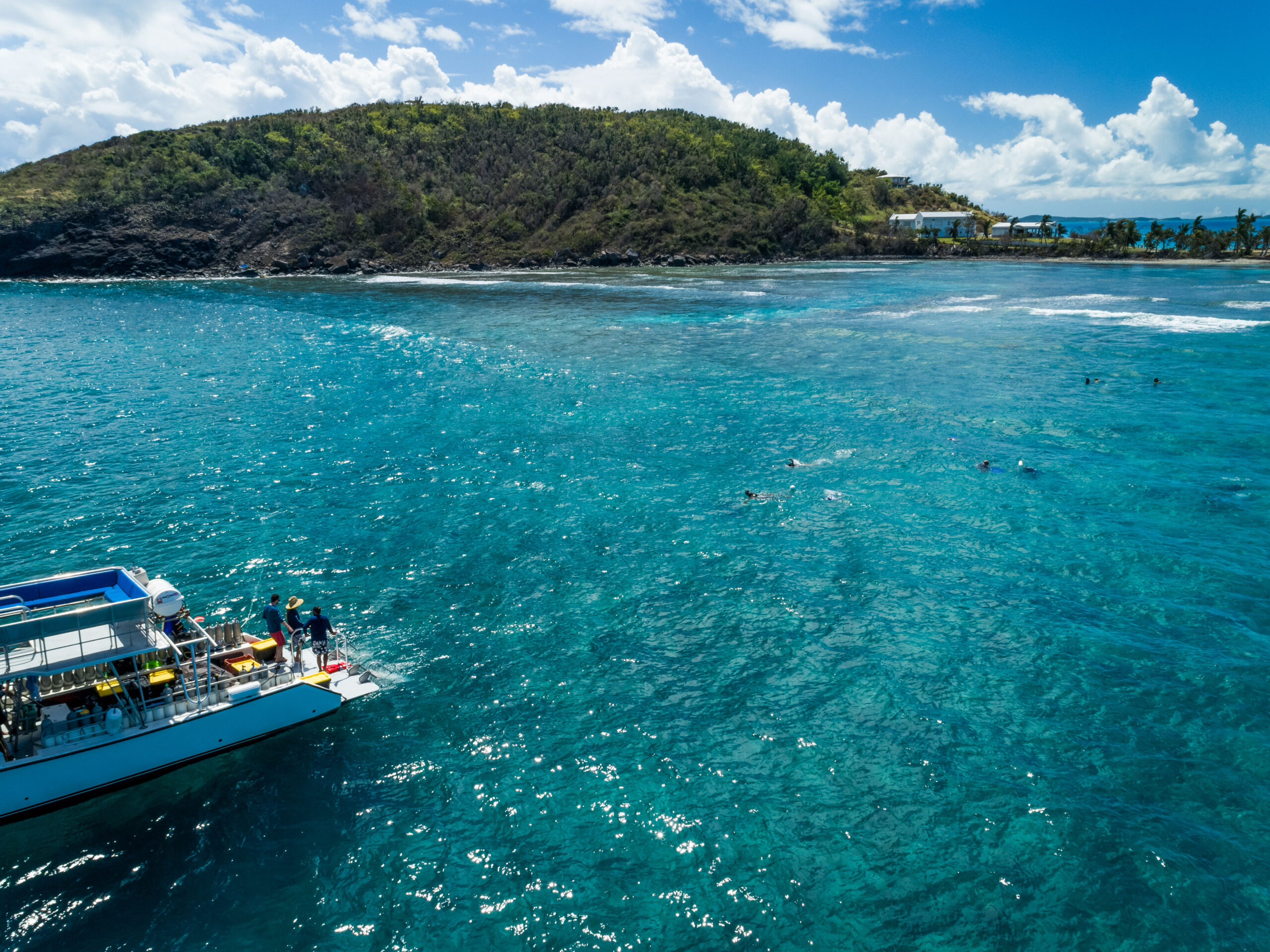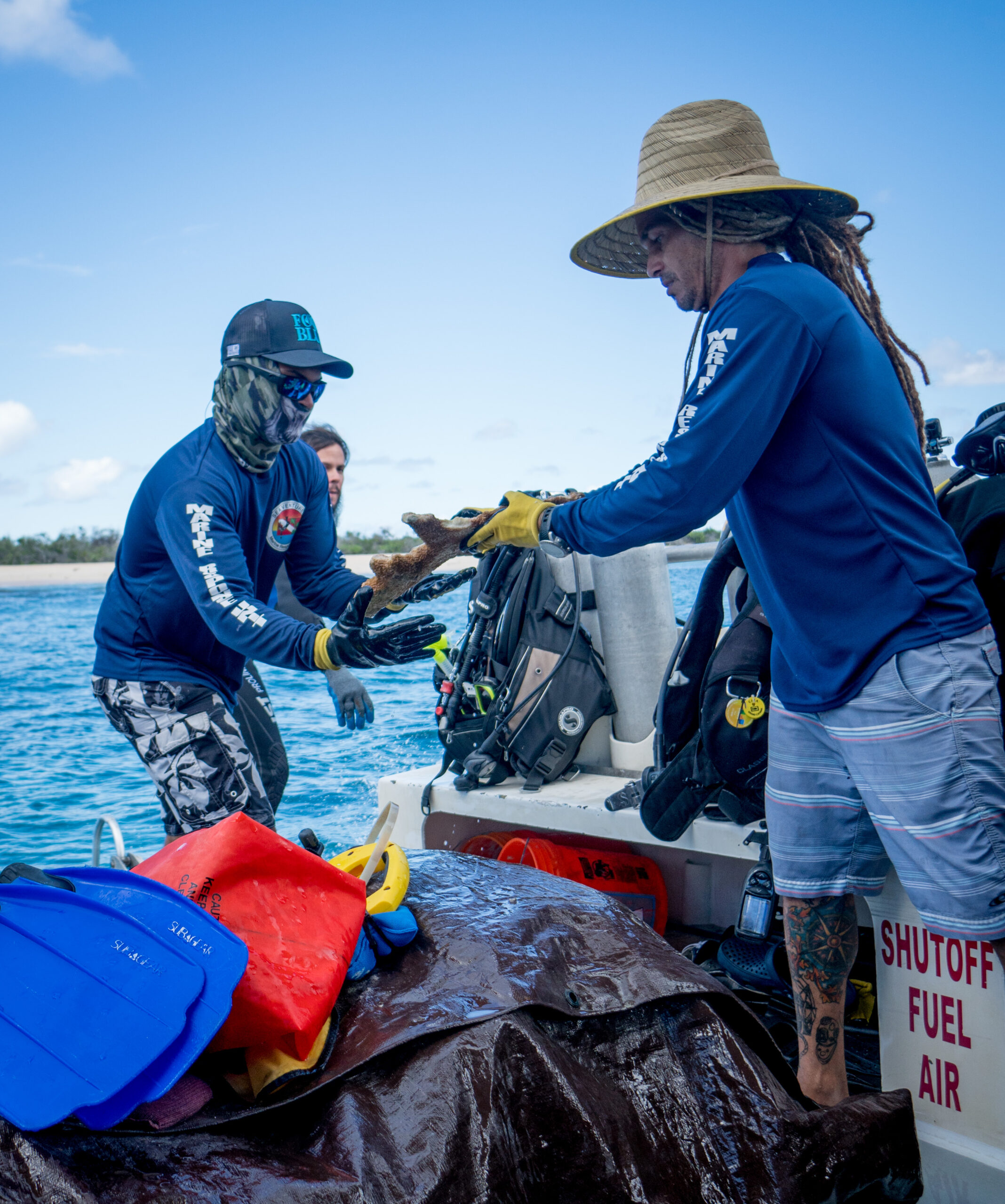Codename Coral
The third installment of our “Force Blue Friday” blog series this May, celebrating our partnership with these amazing veterans and their mission in honor of National Military Appreciation Month.

Ocean Conservancy recently embarked on a partnership with Force Blue to support a coral restoration mission in Puerto Rico. Nathan Quinn, a member of Force Blue Team One deployed to Puerto Rico to assist NOAA, Sea Ventures and Puerto Rico’s Department of Natural Resources in October and has been there since. The Florida native and U.S. Army Veteran and Military Medic Instructor took some time to speak with us about his time in Puerto Rico. This is the second part of a four-part interview series. Click here to read the first installment and here for the second.
What does Force Blue’s diver training look like?
Nathan Quinn: After a rigorous selection process by our own Roger Sparks, Force Blue has an initial two-week training that includes courses from industry leaders like Lad Akins of REEF, Coral Restoration from Patti Gross Kirk of Coral Restoration Foundation, Underwater Photography from the world-famous Cathy Church. There is some classroom instruction but there is simply no substitute for getting in the water and getting the work done. This kind of instruction is very familiar to those with experience in Special Operations; the best in the field tell you how it’s done and in no time flat you are in a controlled environment getting it done under observation—honing that skill to a sharp point. Everyone is fully focused knowing that soon enough it will be put to practice in the field. There is also continuing education, thanks to Force Blue’s Training Director Angelo Fiore, and these programs are only getting better. We come from a diverse background ourselves and have much to teach one another. When there are gaps in that, we find the best in the field to show us how it’s done. We’re lucky enough that they have said yes at every turn.
This effort requires local support and NOAA has been working with local dive company Sea Ventures on this project—what has it been like working alongside the locals who were most impacted by this storm?
Quinn: When you have a task at hand it can be easy to focus on that task and forget that the people working just as diligently at your side have a lot more going on. I remember building this house in Koh Phi Phi, Thailand after the Tsunami had demolished that otherwise idyllic island. As the sun set at the end of the long day it was just myself and the gentleman who would be living and working from the house. “I wish she could see this place, it’s going to be beautiful”. I let the phrase hang there for too long realizing that in focusing on the work I had forgotten why we were doing it. In the time it took us to split a warm beer I discovered that he had lost everything he owned and a staggering nine members of his family—including his wife. There’s a reason we call it a disaster.

Here in Puerto Rico, we are lending a hand to the local projects but it must be said that the lion’s share of the work is being done by dedicated locals who have in some cases lost their homes, their cars, everything. They are working in the blistering heat to rebuild their island of enchantment and coming home to houses without power, feeding their families from stores with barren shelves. Everyone gets tired. It’s a brutal job in difficult conditions. When you look to your left and right and see that level of dedication and appreciation what can you do? You put on a new tank, grab a hammer and keep going until the sun comes down.
Coral reefs have been referred to as the medicine cabinets of the oceans—with your medical background, were you aware of that before your work with Force Blue? What types of medical advances can be assisted by coral reefs?
Quinn: For many, the idea of getting medications from natural sources sounds suspect or even a bit ‘granola.’ In fact, many of the medications we use every day come from the environment around us. Julius Caesar and Cleopatra used Aspirin gathered from tree bark. Many modern heart and sea sickness medications come from plant sources like foxglove and nightshades. We discovered these vital substances through centuries of experimentation. It was only the comparatively recent invention of Scuba that allowed us to similarly explore the opportunities that the near limitless biodiversity of the reefs provide. Unsurprisingly, the world’s oceans hold an equal if not greater trove of medicines. Coral in particular, with their tremendous immune systems, seem to offer a huge opportunity for afflictions that take a particular toll on modern societies – Autoimmune Diseases.
Dozens of such medications have in this way been discovered as a result of the exploration of 5% of the world’s oceans. Just imagine what wonder medicines are in the other 95%.